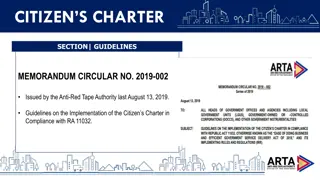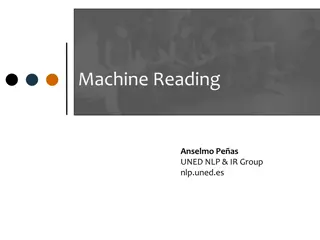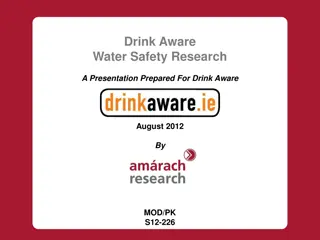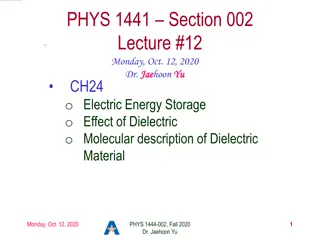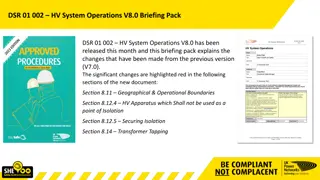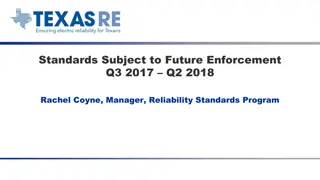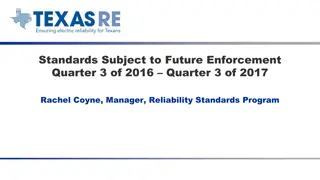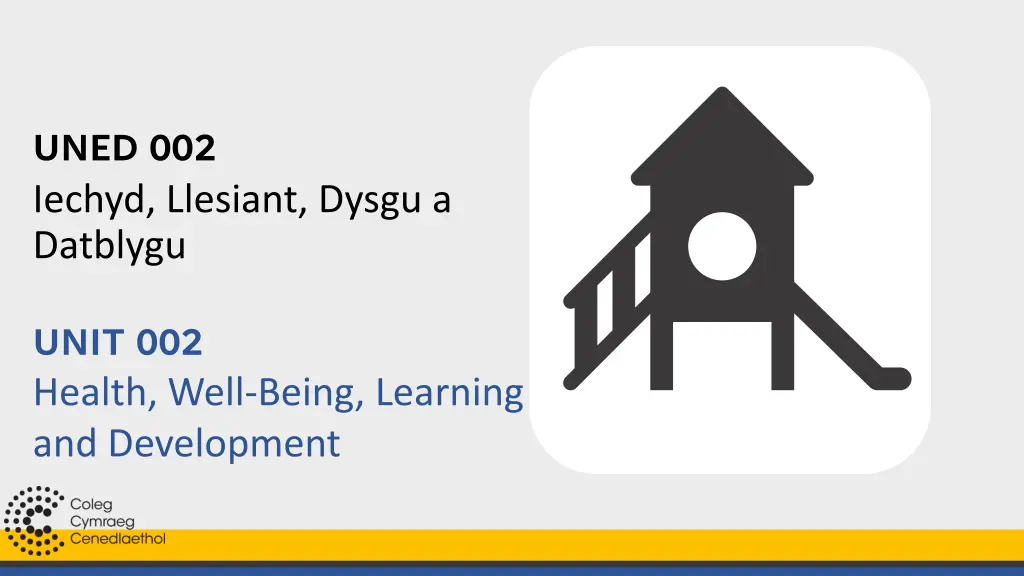
Understanding the Role of Play in Child Development and Well-Being
Explore the significance of playwork principles, the importance of play for children's health and development, the role play has in self-understanding, different types of play and their benefits, environmental support for play, and more. Learn how play assists children in learning about themselves and their surroundings, how it can be used to express emotions, fears, and behavior, and the balance between risk-taking and developmental benefits.
Download Presentation

Please find below an Image/Link to download the presentation.
The content on the website is provided AS IS for your information and personal use only. It may not be sold, licensed, or shared on other websites without obtaining consent from the author. If you encounter any issues during the download, it is possible that the publisher has removed the file from their server.
You are allowed to download the files provided on this website for personal or commercial use, subject to the condition that they are used lawfully. All files are the property of their respective owners.
The content on the website is provided AS IS for your information and personal use only. It may not be sold, licensed, or shared on other websites without obtaining consent from the author.
E N D
Presentation Transcript
UNED 002 Iechyd, Llesiant, Dysgu a Datblygu UNIT 002 Health, Well-Being, Learning and Development
c Egwyddorion Gwaith Chwarae Uned 002 Iechyd, Llesiant, Dysgu a Datblygu Deilliant dysgu 3 Deall r l chwarae wrth gefnogi iechyd, llesiant, dysgu a datblygiad plant. Playwork Principles Unit 002 Health, Well-Being, Learning and Development Learning outcome 3 v v Understand the role of play in supporting the health, well-being, learning and development of children.
In this resource you will learn about: Yn yr adnodd yma byddwch chi n dysgu am: LEARNING OUTCOMES: 3.1 what is meant by the term 'playwork principles' MEINI PRAWF 3.1 beth yw ystyr y term 'egwyddorion gwaith chwarae' 3.2the importance of play for children s health, well-being, learning and development 3.2 pwysigrwydd chwarae er mwyn cefnogi iechyd, llesiant, dysgu a datblygiad plant 3.3the role play has in a child s understanding of themselves 3.3 r l 'chwarae' i blentyn wrth ddeall ei hun 3.4 y gwahanol fathau o chwarae a'u manteision 3.4 the different types of play and their benefit 3.5 how the environment and choice of equipment and materials are used to support play 3.5 sut mae'r amgylchedd a'r dewis o gyfarpar a deunyddiau yn cael eu defnyddio i gefnogi chwarae 3.6 how to support holistic development through play 3.6 sut i gefnogi datblygiad cyfannol drwy chwarae
3.7 sut mae chwarae yn helpu plant i ddysgu amdanyn nhw eu hunain, y rhai o'u cwmpas a'r amgylchedd ehangach 3.7 how play assists children s learning about themselves, those around them and the wider environment 3.8 sut mae plant yn gallu defnyddio chwarae i fynegi emosiwn, ofn, gorbryder neu gop o ymddygiad maen nhw wedi'i weld 3.8 how children may use play to express emotions, fears, anxieties or copy behaviour they have observed 3.9 sut i gynnwys plant wrth greu gwahanol fathau o fannau chwarae 3.9 how to involve children in the creation of different types of play spaces 3.10 sut i nodi os yw man chwarae yn ysgogol, yn heriol, yn ymlaciol neu'n dawel 3.10 how to identify if a play space is stimulating, challenging, restful or relaxing 3.11 pam mae risg yn bwysig wrth chwarae a sut i annog, a chefnogi lefelau derbyniol o risg 3.11 why risk is important in play and how to encourage, and support acceptable levels of risk 3.12 sut i gydbwyso cymryd risgiau manteision datblygiadol iechyd, llesiant, dysgu a datblygiad plant. 3.12 how to balance risk-taking with the developmental benefits to children s health, wellbeing, learning and development.
Yr Hawl i Chwarae The Right to Play Dywed Erthygl 31 yn y Cytundeb: Mae gan bob plentyn yr hawl i orffwys a hamdden, i gymryd rhan mewn gweithgareddau chwarae ac adloniadol sy'n briodol i oedran y plentyn ac i gymryd rhan mewn bywyd diwylliannol a'r celfyddydau heb unrhyw rwystr. Play Wales | Chwarae Cymru Gwyliwch y clip fideo a chymerwch nodiadau Dyma fi: Erthygl 31 a Hawl Plentyn i Chwarae - YouTube Article 31 of the Convention says: Every child has the right to rest and leisure, to engage in play and recreational activities appropriate to the age of the child and to participate freely in cultural life and the arts. Play Wales | Chwarae Cymru Watch the video clip and take down notes v v This Is Me : Article 31 and a Child's Right to Play - YouTube
ADRAN 1 SECTION 1 Meini Prawf 3.1 Beth yw ystyr y term 'egwyddorion gwaith chwarae Assessment Criteria 3.1 What is the meaning of the term playwork principles v v
Mae Egwyddorion Gwaith Chwarae yn cynnwys 8 egwyddor sy n amlygu sut gall plant ddatblygu a dysgu n gadarnhaol yn sgil cael mynediad i chwarae mewn amrywiaeth o amgylchoedd gwahanol. The Playwork Principles include eight principles that highlight how children can develop and learn in a positive manner by having opportunities to play in a variety of different surroundings. Go to the learning resource on the Health and Care Learning Wales website to learn about the 8 principles: Playwork Principles | Health, well-being, learning and development (uk.s3.amazonaws.com) Ewch i r adnodd dysgu ar wefan Dysgu Iechyd Cymru i ddysgu amdanynt: Egwyddorion Gwaith Chwarae | Iechyd, Llesiant, Dysgu a Datblygu
Play Wales has a short leaflet that summarises the 8 principles of play: The Playwork Principles Mae gan Chwarae Cymru ddogfen yn crynhoi r wyth egwyddor: Yr Egwyddorion Gwaith Chwarae Tasg: Meddyliwch am/trafodwch eich plentyndod chi. a) Cofnodwch pa gyfleoedd (opportunities) oedd gennych chi i chwarae (play) a ble? b) Gyda phwy oeddech chi n chwarae? c) Sut oeddech chi n teimlo (feel) wrth chware? Task: Think about/discuss your childhood. a) What opportunities (cyfleoedd) did you have to play (chwarae) and where did you play? b) With whom did you play and where? c) How did you feel (teimlo) when playing?
c Task for assessment criteria 3.1 Tasg ar gyfer meini prawf 3.1 Esboniwch beth yw ystyr y term egwyddorion gwaith chwarae (playwork principles)? v v Explain what the term playwork principles mean?
ADRAN 2 SECTION 2 Assessment Criteria 3.2 The importance of play and how to support holistic development Meini Prawf 3.2 Pwysigrwydd chwarae a sut i gefnogi datblygiad cyfannol v v
Darllenwch y ddogfen: Chwarae neu Dysgu Gweithredol Trosolwg ar gyfer plant 3 i 7 oed, Llywodraeth Cymru (2008) Mae r ddogfen yn darparu trosolwg o bwysigrwydd chwarae/dysgu gweithredol addysgol strwythuredig, ynghyd gwahanol gyfnodau datblygu a sgiliau y gall plant ifanc eu caffael. Diben chwarae neu ddysgu gweithredol yw: cymell ysgogi cefnogi datblygu sgiliau datblygu cysyniadau datblygu sgiliau iaith/cyfathrebu datblygu r gallu i ganolbwyntio datblygu agweddau positif dangos ymwybyddiaeth/defnyddio dysgu a sgiliau diweddar cyfnerthu dysgu. Read the document Play/Active Learning. Overview for 3 to 7 year olds Welsh Government (2008) The document provides an overview of the importance of structured educational play/action learning, together with different stages of development and skills that young children can acquire. The purpose of play or active learning is to: motivate stimulate support develop skills develop concepts develop language/communication skills develop the ability to concentrate develop positive attitudes demonstrate awareness/use of recent learning and skills consolidate learning.
Darllenwch y ddogfen Chwarae: iechyd a lles (2020) gan Chwarae Cymru sy n s n am bwysigrwydd chwarae. Read the document Play: health and well-being (2020) by the organisation Play Wales which talks about the importance of play. Mae chwarae n hanfodol i iechyd a lles corfforol, meddyliol, cymdeithasol ac emosiynol plant, ac o ganlyniad i w teuluoedd ac i gymunedau n gyffredinol. Play is vital to children's physical, mental, social and emotional health and well-being, and as a result to their families and to communities in general.
Ewch i Adnodd Dysgu gan CBAC ar wefan Dysgu Iechyd Cymru i ddysgu mwy: Pwysigrwydd chwarae a datblygiad cyfannol drwy chwarae | Iechyd, Llesiant, Dysgu a Datblygu (uk.s3.amazonaws.com) Go to a Learning Resource by WJEC on the Health and Care Learning Wales website to learn more: Play and holistic development | Health, well-being, learning and development (uk.s3.amazonaws.com)
c Tasg ar gyfer meini prawf 3.2 Task for assessment criteria 3.2 Esboniwch bwysigrwydd chwarae (play) er mwyn cefnogi iechyd (health), llesiant (well-being), dysgu (learning) a datblygiad (development) plant. Explain the importance of play (chwarae)for children s health (iechyd), well-being (llesiant), learning (dysgu) and development (datblygiad). v v Ymchwiliwch ac ystyriwch eich arsylwadau o ch profiadau lleoliad gwaith. Research and consider your observations from your workplace experiences.
ADRAN 3 Meini Prawf 3.3 sut mae chwarae r l yn helpu plant i ddysgu am eu hunain, y rhai o u cwmpas a r amgylchedd ehangach. SECTION 3 Assessment Criteria 3.3 how role play helps a child s understanding of themselves, those around them and the wider environment. v v
Mae chwarae yn cynorthwyo plant i deimlo n dda am eu hunain. Byddant yn dod i ddeall eu hunain wrth gymryd rhan mewn gweithgareddau a phrofiadau sy n cyfrannu tuag at ddatblygu eu sgiliau corfforol, deallusol ac ieithyddol. Yn ogystal dod i adnabod eu hunain mae chwarae yn cynorthwyo plant i ddysgu am eraill o u cwmpas a r amgylchedd ehangach. Play helps children to feel good about themselves. They will come to understand themselves by taking part in activities and experiences that contribute to the development of their physical, intellectual and linguistic skills. As well as getting to know themselves, play also helps children to learn about others around them and the wider environment. Ewch i Adnodd Dysgu gan CBAC ar wefan Dysgu Iechyd Cymru i ddysgu mwy: Chwarae r l i helpu plant i ddysgu am eu hunain a r amgylchedd ehangach| Iechyd, Llesiant, Dysgu a Datblygu (uk.s3-eu-west-1.amazonaws.com) Go to a Learning Resource by WJEC on the Health and Care Learning Wales website to learn more: A child s understanding | Health, well- being, learning and development (uk.s3-eu-west-1.amazonaws.com)
Mae ymchwil yn dangos bod gan chwarae r l hanfodol yn nysgu plant. Yn y clip canlynol mae Dr Jeffrey Trawick-Smith yn trafod pwysigrwydd chwarae ac yn cynghori gweithwyr proffesiynol plentyndod cynnar i edrych ar sawl elfen o chwarae plant, gan gynnwys cymryd rhan mewn chwarae cred, rhyngweithio cymdeithasol yn ystod chwarae, a chymhlethdod chwarae. Research shows that play has an essential role in children's learning. In the following clip Dr. Jeffrey Trawick-Smith discusses the importance of play and advises early childhood professionals to look at several elements of children's play, including engagement in make-believe play, social interaction during play, and play complexity. Gwyliwch y fideo canlynol: The Benefits of Play YouTube Watch the video: The Benefits of Play YouTube
c Task for assessment criteria 3.3 Tasg ar gyfer meini prawf 3.3 What is the role play has in a child s understanding (deall) of themselves? Research and consider your observations from your workplace experiences. Beth ydy r l 'chwarae' i blentyn, wrth ddeall ei hun? Ymchwiliwch ac ystyriwch eich arsylwadau o ch profiadau lleoliad gwaith. v v
ADRAN 4 SECTION 4 Meini Prawf 3.4 Y gwahanol fathau o chwarae a u manteision Assessment Criteria 3.4 The different types of play and their advantages v v
Mae'r adnodd dysgu canlynol gan CBAC ar wefan Dysgu Iechyd Cymru yn edrych ar y mathau o chwarae e.e. dychmygol, corfforol, creadigol, llawdrin, a darganfyddol a hefyd yn edrych ar eu manteision Y gwahanol fathau o chwarae a u manteision i Iechyd, Llesiant, Dysgu a Datblygu The following WJEC learning resource on the Health Learning Wales website looks at the types of Play e.g. imagined, physical, creative, manipulative ,and discoverable and also looks at their advantages The different types of play and their benefits to Health, Wellbeing, Learning and Development
c Tasg ar gyfer meini prawf 3.4 Task for assessment criteria 3.4 Explain the different (gwahanol) types (mathau) of play (chwarae) and their benefit (mantais). Research and consider your observations from your workplace experiences. Esboniwch y gwahanol (different) fathau (types) o chwarae (play) a'u manteision (benefit). Ymchwiliwch ac ystyriwch eich arsylwadau o ch profiadau lleoliad gwaith. v v
ADRAN 5 SECTION 5 Assessment Criteria 3.5, 3.6 and 3.7 how the environment and choice of equipment and materials are used to support play how to support holistic development through play how play assists children s learning about themselves, those around them and the wider environment Meini Prawf 3.5, 3.6 a 3.7 sut mae'r amgylchedd a'r dewis o gyfarpar a deunyddiau yn cael eu defnyddio i gefnogi chwarae sut i gefnogi datblygiad cyfannol drwy chwarae sut mae chwarae yn helpu plant i ddysgu amdanyn nhw eu hunain, y rhai o'u cwmpas a'r amgylchedd ehangach v v
Mae angen amgylchedd cyfoethog ar bob plentyn i'w ysgogi, ac mae pob plentyn yn haeddu amgylchedd o'r fath. Mae angen iddynt deimlo'n ddiogel, yn sicr, yn l n ac yn gyfforddus er mwyn iddynt ddatblygu a thyfu'n gorfforol ac yn emosiynol. Each child needs a rich environment to motivate them, and each child deserves such an environment. They need to feel safe, secure, clean and comfortable in order to develop and grow both physically and emotionally. Ewch i Adnodd Dysgu gan CBAC ar wefan Dysgu Iechyd Cymru i ddysgu mwy: Yr amgylchedd a r dewis o gyfarpar a deunyddiau i gefnogi chwarae | Iechyd, Llesiant, Dysgu a Datblygu Go to a Learning Resource by WJEC on the Health and Care Learning Wales website to learn more: Environment, equipment and materials | Health, well-being, learning and development
Read the document Sourcing materials for children s play by Play Wales. It explores: What is scrounging? Effective scrounging What can be scrounged? Checking resources Support for scrounging Darllenwch y ddogfen Chwilio am ddeunyddiau ar gyfer chwarae plant gan Chwarae Cymru. Mae n archwilio: Beth yw llofa? Llofa effeithiol Beth allwn ni eu llofa? Gwirio adnoddau Cefnogaeth i lofa The information is aimed at playworkers but it s a useful resource for anyone working with children and teenagers. Mae r wybodaeth hon wedi i hanelu at weithwyr chwarae ond mae n ddefnyddiol ar gyfer unrhyw un sy n gweithio phlant o bob oed.
c Tasg ar gyfer meini prawf 3.5 Task for assessment criteria 3.5 Sut mae'r amgylchedd (environment) a'r dewis (choice) o gyfarpar (equipment) a deunyddiau (materials) yn cael eu defnyddio i gefnogi (support) chwarae (play)? Ymchwiliwch ac ystyriwch eich arsylwadau o ch profiadau lleoliad gwaith. How does the use of the environment (amgylchedd) and choice (dewis) of equipment (cyfarpar) and materials (deunyddiau) support (cefnogi) play (chwarae)? Research and consider your observations from your workplace experiences. v v
c Tasg ar gyfer meini prawf 3.6 Task for assessment criteria 3.6 How can you support (cefnogi) holistic (cyfannol) development (datblygiad) through play (chwarae)? Sut gallwch chi gefnogi (support) datblygiad (development) cyfannol (holistic) drwy chwarae (play)? Ystyriwch eich profiadau yn eich lleoliad gwaith. Ymchwiliwch ac ystyriwch eich arsylwadau o ch profiadau lleoliad gwaith. v v Consider your workplace experiences. Research and consider your observations from your workplace experiences.
c Task for assessment criteria 3.7 Tasg ar gyfer meini prawf 3.7 Esboniwch sut mae chwarae yn helpu plant i ddysgu (learn) amdanyn nhw eu hunain, y rhai o'u cwmpas a'r amgylchedd (environment) ehangach (wider)? Ymchwiliwch ac ystyriwch eich arsylwadau o ch profiadau lleoliad gwaith. Explain how play assists children s learning (dysgu) about themselves, those around them and the wider (ehangach) environment (amgylchedd). Research and consider your observations from your workplace experiences. v v
ADRAN 7 SECTION 7 Meini Prawf 3.8 Chwarae i fynegi emosiwn, ofn, gorbryder neu gop o ymddygiad maen nhw wedi i weld Assessment Criteria 3.8 Play as a method of showing emotion, fear, anxiety or to copy behaviours they have seen v v
Gall blant fynegi eu teimladau trwy eu hymddygiad a thrwy chwarae. Maen nhw n defnyddio amrywiaeth o ddulliau cyfathrebu i gyfleu ystyr a mynegiant. Gall hyn amrywio o ddefnyddio r corff cyfan a symud mewn ffordd benodol neu ddefnyddio r wyneb. Children can express their feelings through their behaviour and in their play. They use a variety of communication methods to convey meaning and expression. This can vary from using the whole body and moving in a specific way or using the face. Ewch i Adnodd Dysgu gan CBAC ar wefan Dysgu Iechyd Cymru i ddysgu mwy: Chwarae i fynegi emosiwn neu gop o ymddygiad | Iechyd, Llesiant, Dysgu a Datblygu Go to a Learning Resource by WJEC on the Health and Care Learning Wales website to learn more: Play to express emotions | Health, well-being, learning and development (uk.s3-eu-west- 1.amazonaws.com)
c Task for assessment criteria 3.8 Tasg ar gyfer meini prawf 3.8 Trafodwch sut mae plant yn gallu defnyddio chwarae i fynegi (express) emosiwn (emotion), ofn (fear), gorbryder (anxiety) neu gop o ymddygiad (behaviour) maen nhw wedi'i weld. Discuss how children may use play to express (mynegi) emotions (emosiwn), fear (ofn),anxieties (gorbryder) or copy behaviour (ymddygiad) they have observed. v v Ystyriwch eich arsylwadau o ch lleoliad gwaith Include observations you may have from your work placement.
ADRAN 8 Meini Prawf 3.9 a 3.10 Creu gwahanol fathau o fannau chwarae ysgogol, heriol, ymlaciol neu dawel Cynnwys plant mewn gwahanol fathau o chwarae SECTION 8 Assessment Criteria 3.9 and 3.10 Create different types of stimulating, challenging, relaxing or quiet play areas Involving children in different types of play v v
Ble bynnag mae plant yn byw mae n hanfodol eu bod yn cael mynediad i fannau chwarae ble gellir cael cyfle i chwarae n rhydd a gwneud dewisiadau dros eu hunain. Mae angen iddynt gymryd rhan flaenllaw wrth i fannau chwarae gael eu cynllunio er mwyn iddynt gael perchnogaeth dros eu chwarae. Wherever the children live, it is essential that they have access to play areas where they can have opportunities to play freely and to make their own choices. They need to be play a leading part when planning play areas in order to be given ownership of their play. Ewch i Adnodd Dysgu gan CBAC ar wefan Dysgu Iechyd Cymru i ddysgu mwy: Creu gwahanol fannau chwarae ysgogol, heriol, ymlaciol neu dawel | Iechyd, Llesiant, Dysgu a Datblygu Go to a Learning Resource by WJEC on the Health and Care Learning Wales website to learn more: Different types of playHealth, well- being, learning and development
Children and young peoples right to participate in all matters affecting them is enshrined in Article 12 of the United Nations Convention on the Rights of the Child (UNCRC). Caiff hawl plant a phobl ifainc i gyfranogi ym mhob mater sy n effeithio arnynt ei ddiogelu gan Erthygl 12 o Gonfensiwn y Cenhedloedd Unedig ar Hawliau r Plentyn (CCUHP). Darllenwch y ddogfen Cyfranogiad ac ymgynghori gyda phlant gan Chwarae Cymru. Read the document Participation and consulting with children by Play Wales. Mae n s n am: Beth yw cyfranogiad? Erthygl 12 Sut a pham byddwn yn ymgynghori gyda phlant Chwarae a chyfranogiad It discusses: What is participation? Article 12 How and why do we consult with children Play and participation
c Tasg ar gyfer meini prawf 3.9 Task for assessment criteria 3.9 Esboniwch sut i gynnwys (involve) plant wrth greu (create) gwahanol fathau o fannau chwarae (play spaces). Explain how to involve (cynnwys) children in the creation (creu) of different types of play spaces (mannau chwarae). v v Ymchwiliwch ac ystyriwch eich arsylwadau o ch profiadau lleoliad gwaith. Research and consider your observations from your workplace experiences.
c Tasg ar gyfer meini prawf 3.10 Task for assessment criteria 3.10 Trafodwch sut i nodi p'un a yw man chwarae (play space) yn ysgogol (stimulating), yn heriol (challenging), yn ymlaciol (relaxing) neu'n dawel (restful) Sut fyddech yn mynd ati i greu map neu ddiagram o ch lleoliad gwaith sy nnodi r ardaloedd yma? Discuss how to identify if a play space (man chwarae) is stimulating (ysgogol), challenging (heriol), restful (tawel) or relaxing (ymlaciol). How would you go about designing a map or a diagram to illustrate these areas at your work placement? v v
SECTION 10 ADRAN 10 Assessment Criteria 3.11 Why risk is important in play and how to encourage, and support acceptable levels of risk Meini Prawf 3.11 Pwysigrwydd risg wrth chwarae a sut i annog lefelau derbyniol o risg v v
Mae cadw plant a phobl ifanc yn ddiogel o fewn y lleoliad yn flaenoriaeth. Maen nhw angen: amgylchedd diogel sydd yn heriol cyfle i archwilio r amgylchedd a gwneud penderfyniadau dros eu hunain cyfleoedd i ddatrys problemau ac ystyried beth all ddigwydd wrth beidio bod yn ofalus Keeping children and young people safe within the setting is a priority. They need: a safe but challenging environment the opportunity to explore the environment and to make their own decisions opportunities to solve problems and consider what could happen if they are not careful Go to a Learning Resource by WJEC on the Health and Care Learning Wales website to learn more: Why risk is important in play and how to encourage and support acceptable risk Ewch i Adnodd Dysgu gan CBAC ar wefan Dysgu Iechyd Cymru i ddysgu mwy: Pwysigrwydd risg wrth chwarae a sut i annog lefelau derbyniol o risg| Iechyd, Llesiant, Dysgu a Datblygu
Darllenwch y ddogfen Rheoli Risg mewn Darpariaeth Chwarae. pdf (chwaraecymru.org.uk) Read the document Managing Risk in Play Provision.pdf (playwales.org.uk) Mae n dangos sut y gall darparwyr chwarae ddatblygu agwedd tuag at reoli risg sy n ystyried buddiannau profiadau chwarae heriol i blant a phobl ifanc. It discusses how play providers can develop an approach to risk management that takes into account the benefits to children and young people of challenging play experiences. Mae n seiliedig ar ddatganiad sefyllfa r Play Safety Fourm Managing risk in play provision: position statement (2002). It builds on the Play Safety Forum's position statement Managing risk in play provision (2002).
c Tasg ar gyfer meini prawf 3.11 Task for assessment criteria 3.11 Eglurwch pam mae risg yn bwysig wrth chwarae a sut i annog, a chefnogi lefelau derbyniol o risg. Ymchwiliwch ac ystyriwch eich arsylwadau o ch profiadau lleoliad gwaith. Explain why risk is important in play and how to encourage, and support acceptable levels of risk. Research and consider your observations from your workplace experiences. v v
ADRAN 10 SECTION 10 Assessment Criteria 3.12 Balancing risk and the advantages for child development Meini Prawf 3.12 Cydbwyso cymryd risgiau manteision datblygiadol plant v v
It is essential that childcare workers ensure that they are meeting children's needs with regard to health, well-being, learning and development. One way to ensure this is to strike a balance between safety and risk. Mae n hanfodol bod gweithiwyr gofal plant yn sicrhau eu bod yn cwrdd ag anghenion iechyd, llesiant, dysgu a datblygu plant. Un ffordd o arfer hyn yw drwy gael cydbwysedd rhwng diogelwch a risg. Go to a Learning Resource by WJEC on the Health and Care Learning Wales website to learn more: How to balance risk-taking Health, well-being, learning and development Ewch i Adnodd Dysgu gan CBAC ar wefan Dysgu Iechyd Cymru i ddysgu mwy: Cydbwyso cymryd risgau a manteision datblygiadol plant
c Tasg ar gyfer meini prawf 3.12 Task for assessment criteria 3.12 Sut gallwch chi gydbwyso (balance) cymryd risgiau (risk-taking) manteision (benefits) datblygiadol (developmental) iechyd (health), llesiant (wellbeing) , dysgu (learning) a datblygiad (development) plant. Ymchwiliwch ac ystyriwch eich arsylwadau o ch profiadau lleoliad gwaith. How can you balance (cydbwyso) risk- taking (cymryd risgiau) with the developmental (datblygiadol) benefits (manteision) to children s health (iechyd), wellbeing (llesiant), learning (dysgu) and development (datblygiad)? Research and consider your observations from your workplace experiences. v v
Wrth ddilyn yr adnodd hwn roedd cyfle i chi ddysgu am: In following this resource there was an opportunity for you to learn about: 3.1 what is meant by the term 'playwork principles' 3.2 the importance of play for children s health, well-being, learning and development 3.1 beth yw ystyr y term 'egwyddorion gwaith chwarae' 3.2 pwysigrwydd chwarae er mwyn cefnogi iechyd, llesiant, dysgu a datblygiad plant 3.3 r l 'chwarae' i blentyn wrth ddeall ei hun 3.3 the role play has in a child s understanding of themselves 3.4 y gwahanol fathau o chwarae a'u manteision 3.4 the different types of play and their benefit 3.5 sut mae'r amgylchedd a'r dewis o gyfarpar a deunyddiau yn cael eu defnyddio i gefnogi chwarae 3.5 how the environment and choice of equipment and materials are used to support play 3.6 sut i gefnogi datblygiad cyfannol drwy chwarae 3.6 how to support holistic development through play
3.7 sut mae chwarae yn helpu plant i ddysgu amdanyn nhw eu hunain, y rhai o'u cwmpas a'r amgylchedd ehangach 3.7 how play assists children s learning about themselves, those around them and the wider environment 3.8 sut mae plant yn gallu defnyddio chwarae i fynegi emosiwn, ofn, gorbryder neu gop o ymddygiad maen nhw wedi'i weld 3.8 how children may use play to express emotions, fears, anxieties or copy behaviour they have observed 3.9 sut i gynnwys plant wrth greu gwahanol fathau o fannau chwarae 3.9 how to involve children in the creation of different types of play spaces 3.10 sut i nodi os yw man chwarae yn ysgogol, yn heriol, yn ymlaciol neu'n dawel 3.10 how to identify if a play space is stimulating, challenging, restful or relaxing 3.11 pam mae risg yn bwysig wrth chwarae a sut i annog, a chefnogi lefelau derbyniol o risg 3.11 why risk is important in play and how to encourage, and support acceptable levels of risk 3.12 sut i gydbwyso cymryd risgiau manteision datblygiadol iechyd, llesiant, dysgu a datblygiad plant. 3.12 how to balance risk-taking with the developmental benefits to children s health, wellbeing, learning and development.

